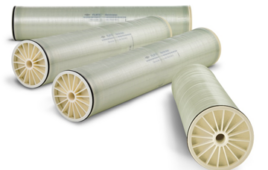On
the one-year anniversary of the devastating Japanese tsunami, engineers
from the University of Southern California Viterbi School of Engineering Tsunami Research Center are
working with the State of California to better understand the damaging
currents caused by tsunamis.
Funded
by the California Geological Survey, the California Emergency
Management Agency, and the Federal Emergency Management Agency, USC
researchers will use hydrodynamic computer modelling and historical
tsunami data to evaluate the currents generated by tsunamis and their
effect within California ports and harbors.
Results
from the study will be used to determine safe depths for evacuation, to
map zones that might be prone to higher or lower currents under tsunami
conditions (to inform how ships and boats are moved and evacuated), and
to create hazard maps for ports, harbors and marinas. Work will begin
in the next few weeks and last through the end of 2012.
Currents
caused by the Japanese tsunami of March 2011 caused millions of dollars
of damage at 27 harbors along the California coast, particularly in
Santa Cruz and Crescent City. In Santa Barbara, swirling currents lasted
for more than 24 hours, with the strongest surges taking place long
after the original currents.
According
to Associate Professor Patrick Lynett and Adjunct Research Professor
Jose Borrero of the USC Sonny Astani Department of Civil and
Environmental Engineering, who will conduct the study, these
tsunami-induced “phantom currents” are not well understood. Even in
moderate sized tsunamis, currents can rip large boats from their
moorings. During the Indian Ocean tsunami in 2004, at locations very far
from the earthquake itself, large ships were ripped from their moorings
and pushed around the harbor by surges occurring many hours after the
tsunami first arrived.
A
similar effect occurred in Crescent City in November 2006, when a
magnitude 8.3 earthquake off of Russia’s Kuril Island caused a moderate
tsunami. The currents caused by the waves were strongest some three
hours after tsunami arrival and caused $20 million in damage to Crescent
City harbor. Repairs from that event had not yet been completed when
the Japan tsunami struck.
“Imagine
an oil tanker or cargo ship torn loose and out of control in the Port
of LA or San Francisco Bay,” warns Dr. Lynett, USC’s John and Dorothy
Shea Early Career Chair in Civil Engineering. “The problem could
escalate very quickly.”
“California
is being proactive in its effort to re-evaluate certain elements of its
tsunami preparedness based on lessons learned from the Japan event,”
says Dr. Borrero. “During the Japan tsunami, even though we knew how big
the waves were going to be, we severely underestimated the strength and
duration of the currents.”
“Fortunately,
this is a hazard that can be dealt with,” says Rick Wilson of the
California Geological Survey. His agency and the Federal and State
emergency management agencies are funding Drs. Lynett and Borrero to
look at this issue as part of USC’s ongoing initiative to provide
tsunami expertise to the State.
Dr.
Lynett and Borrero have been working together gathering data on this
phenomenon and to applying advanced computer models to quantify the
extent and duration of these late arriving and potentially damaging
surges. Said Lynett, “We have the tools available to understand this
problem and make the right call in the future.”
In an article published last week in the journal Earth and Planetary Science Letters,
Lynett and Borrero describe observations of these currents at several
locations both within California and internationally and describe their
efforts to understand them.
Observations and modeling of tsunami-induced currents in ports and harbors




